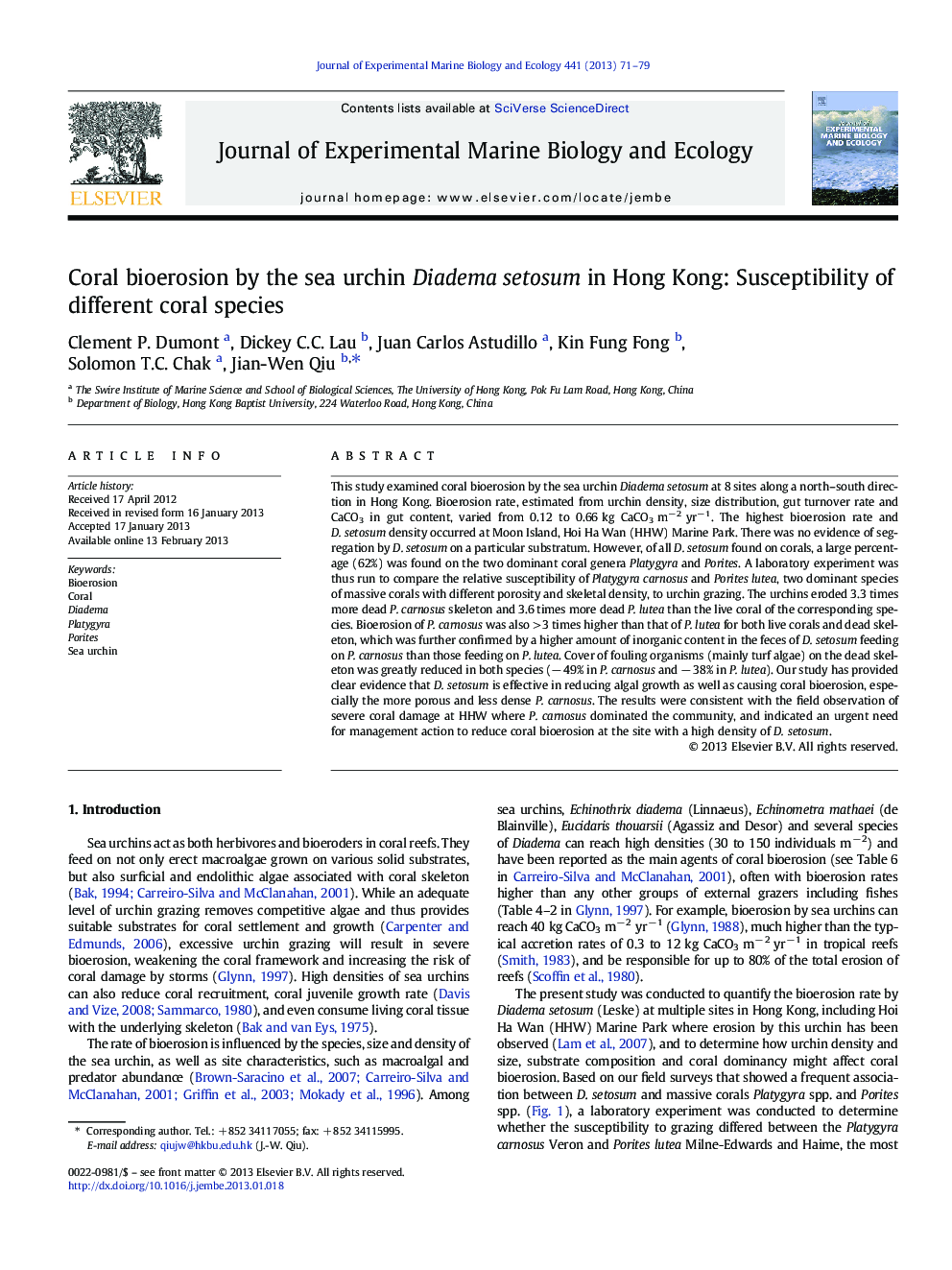| کد مقاله | کد نشریه | سال انتشار | مقاله انگلیسی | نسخه تمام متن |
|---|---|---|---|---|
| 4395755 | 1618434 | 2013 | 9 صفحه PDF | دانلود رایگان |

This study examined coral bioerosion by the sea urchin Diadema setosum at 8 sites along a north–south direction in Hong Kong. Bioerosion rate, estimated from urchin density, size distribution, gut turnover rate and CaCO3 in gut content, varied from 0.12 to 0.66 kg CaCO3 m− 2 yr− 1. The highest bioerosion rate and D. setosum density occurred at Moon Island, Hoi Ha Wan (HHW) Marine Park. There was no evidence of segregation by D. setosum on a particular substratum. However, of all D. setosum found on corals, a large percentage (62%) was found on the two dominant coral genera Platygyra and Porites. A laboratory experiment was thus run to compare the relative susceptibility of Platygyra carnosus and Porites lutea, two dominant species of massive corals with different porosity and skeletal density, to urchin grazing. The urchins eroded 3.3 times more dead P. carnosus skeleton and 3.6 times more dead P. lutea than the live coral of the corresponding species. Bioerosion of P. carnosus was also > 3 times higher than that of P. lutea for both live corals and dead skeleton, which was further confirmed by a higher amount of inorganic content in the feces of D. setosum feeding on P. carnosus than those feeding on P. lutea. Cover of fouling organisms (mainly turf algae) on the dead skeleton was greatly reduced in both species (− 49% in P. carnosus and − 38% in P. lutea). Our study has provided clear evidence that D. setosum is effective in reducing algal growth as well as causing coral bioerosion, especially the more porous and less dense P. carnosus. The results were consistent with the field observation of severe coral damage at HHW where P. carnosus dominated the community, and indicated an urgent need for management action to reduce coral bioerosion at the site with a high density of D. setosum.
Figure optionsDownload high-quality image (183 K)Download as PowerPoint slideHighlights
► Coral bioerosion by Diadema setosum was studied using surveys and experiments.
► Highest bioerosion rate was found in a marine park with high urchin densities.
► Skeletal density and porosity may explain coral's susceptibility to bioerosion.
Journal: Journal of Experimental Marine Biology and Ecology - Volume 441, March 2013, Pages 71–79